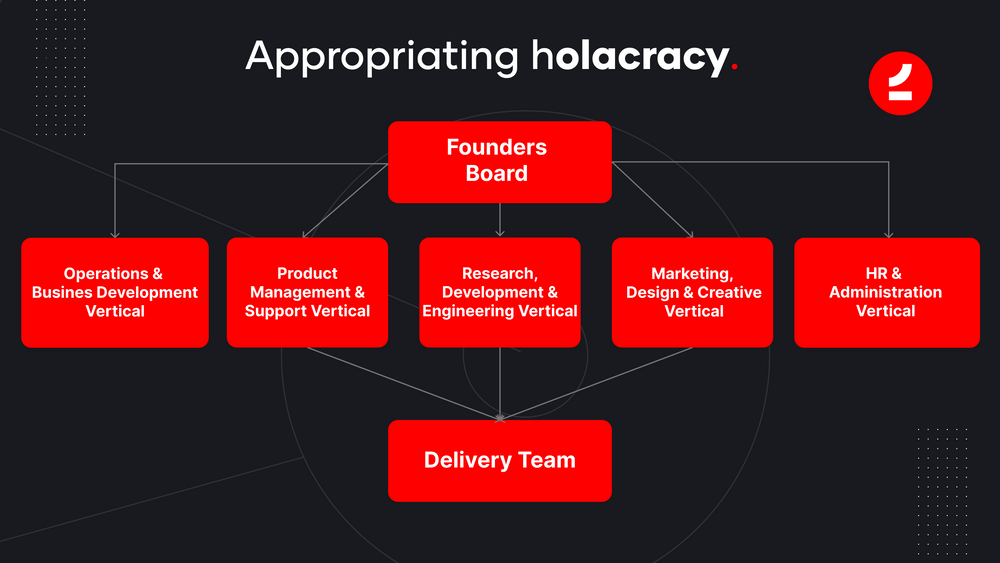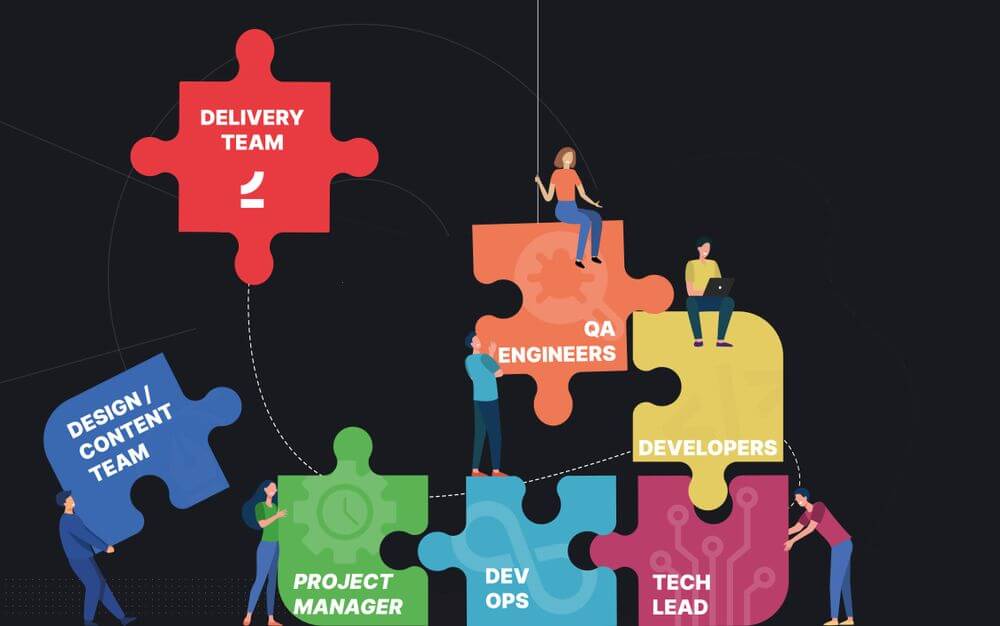How 2am.tech adjusted holacracy to scale the company and adapt to fast growth
Back to postsWe are witnessing a massive insurgence of fast-growing companies in the tech industry. Growth is a crucial part of company development. However, fast growth in a short period can be challenging. If the company keeps scaling with the wrong approach, the growth can be destructive and hurt the company.
Within just one year, we doubled the number of people at 2am.tech. In the process, we concluded that a flat hierarchy system is hard to sustain with that level of the company growth. Furthermore, we did not want to fall into a classic management hierarchy trap.
So we decided to explore alternatives and tried to provide the best of both worlds. Through our research, we have discovered holacracy and its principles. Although quite progressive, it strongly resonated with some of our ideas on managing a fast-growing company. So, what is holacracy?
By its definition, holacracy is:
A method of decentralized management and organizational governance, which claims to distribute authority and decision-making through a holarchy of self-organizing teams.
It re-examines the decision-making principle, how work gets done, and responsibility distribution. Leadership is contextual and distributed among roles, not individuals. Essentially, it is a replacement for the management hierarchy.
In companies that are following holacracy, teams are the company structure. Individual roles and responsibilities are collectively defined and assigned to accomplish the work. However, the crucial trait is that teams design and govern themselves while nested within a larger team structure. Only some of these elements were interesting to us.
Instead of classic organized teams in a fully holacratic organization, we have implemented a slightly different approach. Alternatively, to company teams, the composition of the company structure lies in various, organized verticals:
Company-oriented verticals:
- Operations and business development
- HR and administration
Delivery-oriented verticals:
- Product management and support
- Research, development, and engineering
- Creative: marketing and design

Once we made the distinction between the “company” and “delivery” verticals, it was easier to re-organize and establish a structure that supports our company’s value proposition.
We fully support independence, proactivity, and consultative decision-making. Therefore, we opted to appropriate certain holacratic elements of self-organization that could be valuable tools for companies such as ours. Those elements are most recognizable in our self-managed delivery teams scattered across the company.
To be fully adjustable to the needs and requirements of our clients, we formed cross-functional delivery teams that are flexible and follow the agile mindset and agile delivery approach. These teams are composed of people from different delivery verticals as per client requirements. In that sense, the delivery team structure aims to achieve a perfect balance between reliability and adaptability to our clients. We aim to form a suitable team to deliver a tailor-made solution to our clients.

Depending on the client’s demands, the 2am.tech delivery team consists of people with various skills. The team works independently to deliver the MVP and continues the work on further feature development and enhancements. Each project and client has a unique set of requirements. Knowing this, we try to shape the team according to client needs. This understanding sets a good foundation for long-term planning and defining future project requirements.
Why our self-governed delivery teams are functioning so well? We always try to achieve a perfect balance in each delivery team.
The delivery team personifies the company culture and works hard to understand the direction, vision, and project implementation. Moreover, we build relationships based on trust and mutual understanding within the company and with our clients. The benefit of that approach is evident. It helps eradicate the idea of supreme supervision and old-fashioned authority within the company and within a delivery team. Equally, it encourages our colleagues to be initiative and stand out with their ideas and individual qualities when working with clients.
Finally, it is essential to support the idea of helping others perform at their best possible level. This way, every delivery team is fully functional to operate and collaborate with little or no authority at the highest level.


